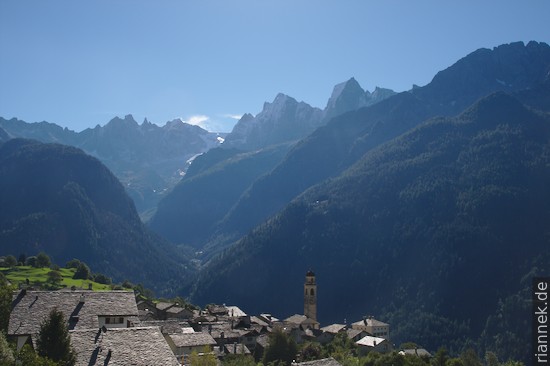
The Tschingelhörner are virtually an icon of tectonics: divided by a sharp line into two storeys of completely different rocks. On top, Permian sediments (greywackes, etc.), which have been pushed over the younger, almost undisplaced sediments (limestone, flysch). Incidentally, there is a large round hole in the rock face, the Martinsloch. The line is the main Glarus thrust, and the rocks above it belong to the Helvetic nappe system. This is where the nappe structure of the Alps was recognised for the first time ever, and the whole thing can actually be seen so well that it was rightly declared a World Natural Heritage Site.

To take some last-minute photos for my book on orogenesis, I made a short excursion to the Alps in September. The best way to get to the Tschingelhörner is to take the post bus from Chur to Flims and from there take the cable car to the Cassons. Here you are already standing on the surface of the overthrust, which can be seen as a striking line on the other side of a valley at Piz Dolf and Piz Segnes. A two-hour hike to the Segnes Pass takes you past the classic views of the Tschingelhörner, and a path leads back down to Flims via the Segnes hut.
Flims itself stands on another geological attraction: about 10,000 years ago, huge masses of rock broke loose and slided into the valley, where they remained as a hilly landscape. At times, the Rhine was dammed until it carved the Rhine Gorge. The Flims landslide is the largest landslide in the Alps.

I take the train to Sankt Moritz and then get on a bus to Promotogno in Bregaglia (Bergell). Besides the Adamello, the Bregaglia granite is the only major granite intrusion formed during the formation of the Alps. The massif consists of impressive mountains with rugged rock faces. A beautiful hiking trail connects the mountain huts Capanna di Sciora and Capanna Sasc Furä. At the highest point, above Furä, you stand directly below the huge north face of Piz Badile and have a great view of Pizzo Cengalo and Sciora.

Finally, I drive to the mountain village of Soglio, which is rightly frequented by tourists. The old houses huddle on a small terrace around the church tower, with granite cliffs towering behind them. A nice walk takes me down to Stampa, where I jump on the bus back to Sankt Moritz.
